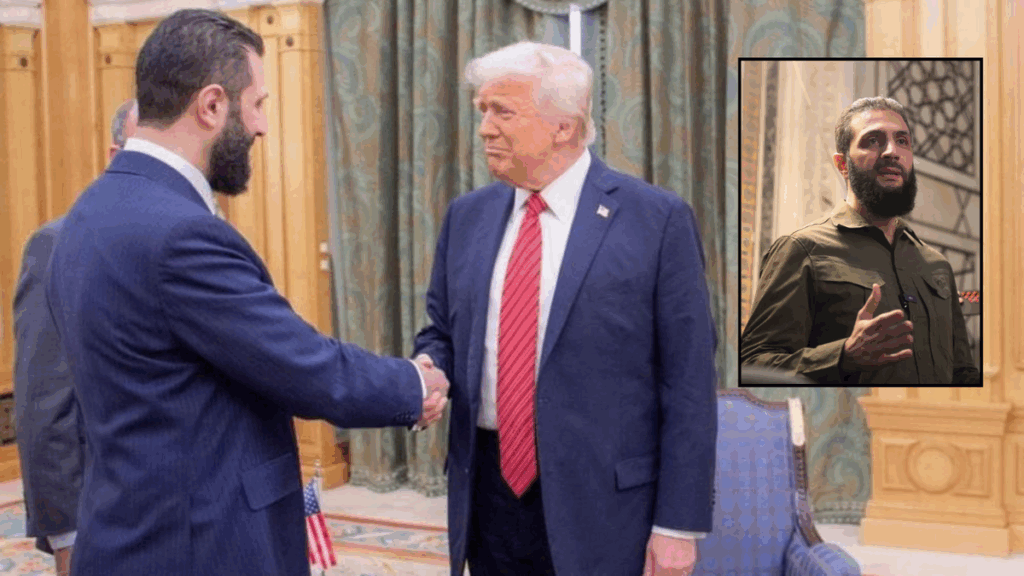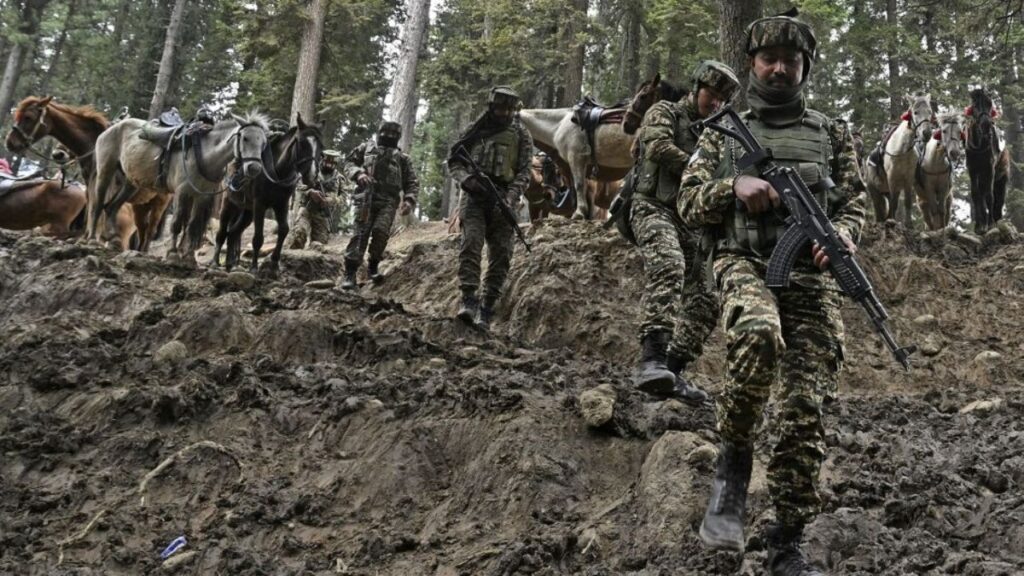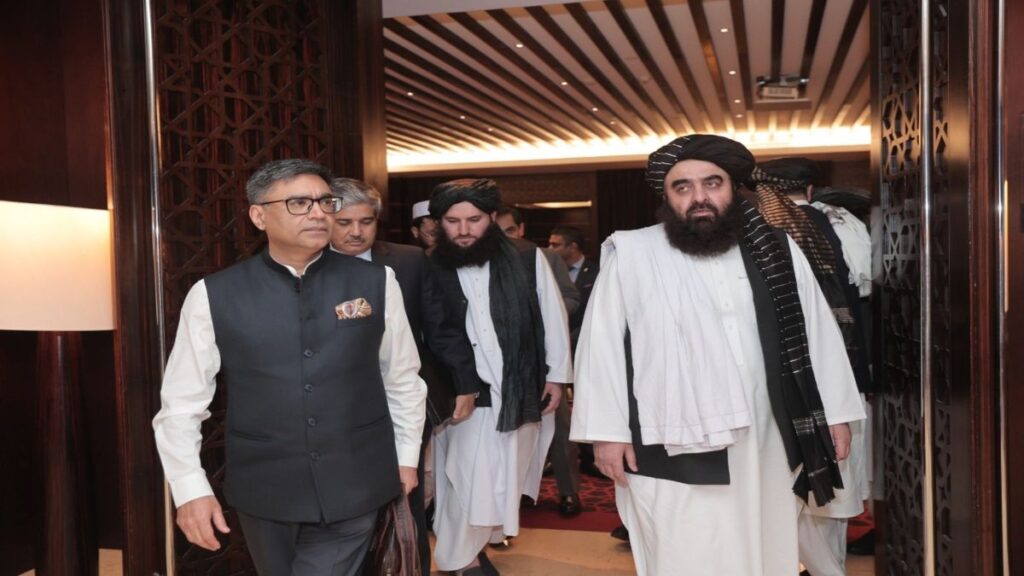
Story of Syrian President Ahmed Al-Sharaa
In what may be called a major geopolitical shift and an unexpected moment in the contemporary history of West Asia, US President Donald Trump met Syria’s leader Ahmed al-Sharaa in Saudi capital Riyadh. Not only did Trump shake hands with Syria’s interim president becoming the first leader in 25 years to meet the Syrian counterpart but also announced a major breakthrough by lifting the Assad era sanctions. Trump also went a step forward by urging this ‘young, tough guy’ to recognise Israel eyeing an expansion to Abraham Accords.
It remains to be seen if this meet between Trump and Al Sharaa opens the doors of new sunrise in Syria. Currently what’s pathbreaking is America’s embracing Ahmed al- Sharaa aka Abu Mohammad Al-Jolani: once an US designated terrorist whose Al-Nusra front was an offshoot of Osama Bin Laden’s Al-Qaeda.
Ahmed Al- Sharaa: From terrorist to meeting Trump
The world knew Abu Mohammad al-Julani, a designated terrorist, who was born in 1982 in Riyadh to Syrian parents originally from the Golan Heights. He became involved in jihadist movements during the early 2000s and joined al-Qaeda in Iraq amid the chaos of the US invasion and was later captured by American forces in 2006. After spending five years in detention, he returned to Syria as the civil war erupted in the aftermath of Arab Spring.
He founded the al-Nusra Front, an offshoot of al-Qaeda, which played a major role in the conflict. But by 2016, al-Sharaa publicly broke away from al-Qaeda, rebranding his organization as Hay’at Tahrir al-Sham (HTS) and signaling a shift toward a more localised Syrian agenda.
Ahmed al-Sharaa’s rise to power in Syria was the result of a swift military campaign and a carefully managed political transition. In late 2024, forces loyal to al-Sharaa, under the banner of HTS, launched a major offensive against the Syrian Arab Army. This campaign culminated in the capture of Damascus on December 8, forcing then-President Bashar al-Assad to flee the country, seeking refuge in Russia.
Following the fall of the capital, al-Sharaa worked with key political figures, including former Prime Minister Mohammad Ghazi al-Jalali, to form a transitional government. Mohammed al-Bashir was appointed to lead this interim administration, aiming to bring stability after years of conflict. Later, Ahmed Al-Sharaa was chosen as interim president.
Ahmed al-Sharaa, previously known by nom de guerre Abu Mohammad al-Julani, began using his real name in late 2024 as part of a deliberate effort to shift his public image. This transition came after the fall of Damascus and the departure of Bashar al-Assad from power. By reverting to his birth name, al-Sharaa signaled a departure from Al-Qaeda links so as to present himself as a legitimate political figure.
This name change was not merely symbolic—it was a strategic move aimed at gaining international recognition and distancing himself from past affiliations with al-Qaeda.
And he might not be wrong, Al-Sharaa might have rewritten Syria’s contemporary history with that handshake with the president of United States in Riyadh. “Attrative guy, tough guy, very strong past,” is how Trump later described Sharaa to journalists.





Responses